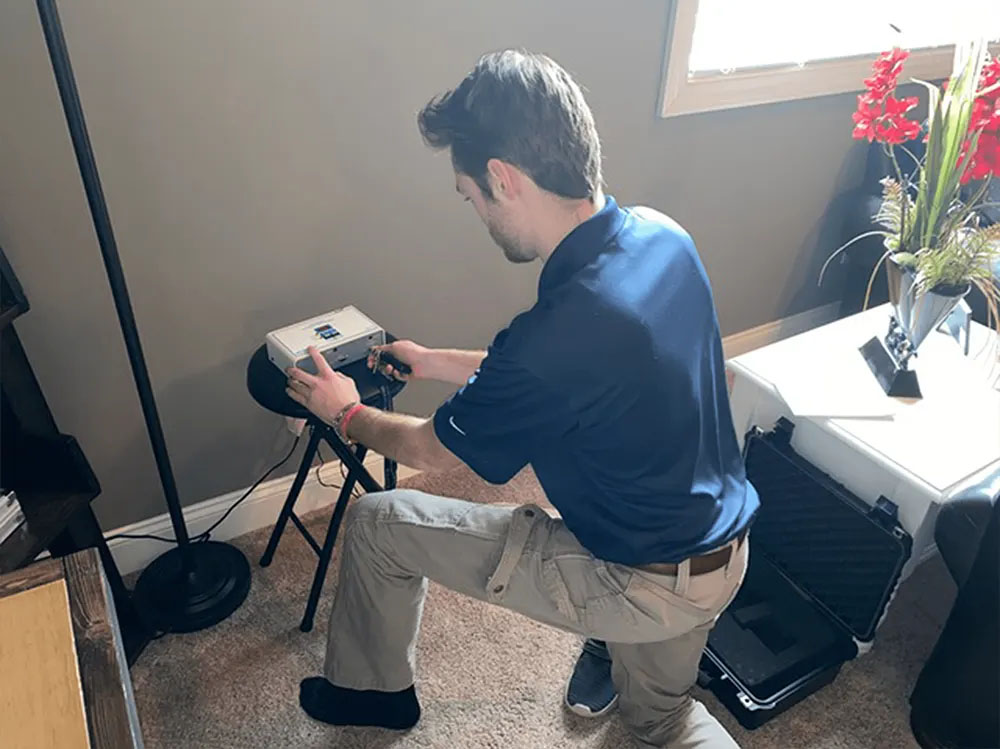Radon, an odorless and colorless gas, can be found in soil and rocks worldwide. It poses a health risk when it infiltrates buildings and accumulates in concentrations. Shockingly, radon is the leading cause of lung cancer in the United States, trailing smoking. This blog post will delve into the importance of conducting radon testing for your home and family.
What is Radon, and How Does it Find its Way into Homes?
Radon naturally occurs due to uranium decay in soil, rocks, and water sources. It gradually rises through the ground until it reaches the air above us. Through cracks or other openings in foundations, radon can enter buildings. Additionally, well water can also be a source of radon infiltration.
Inside your home, radon levels can accumulate significantly. The gas breaks into particles that could become trapped within your lungs when you breathe them in. As time passes, these particles can potentially harm the cells lining your lungs and ultimately lead to lung cancer. The primary reason why you should opt for professional radon testing services.
The Significance of Conducting Radon Testing
Conducting radon testing is crucial as it remains the method to determine whether high radon levels are present within your home. The Environmental Protection Agency (EPA) in the United States advises homeowners to test their homes for radon regardless of where they live or the type of foundation they have. Radon levels can differ from home to home, so it’s essential to conduct a radon test to determine if your home is affected.
Testing for radon is simple and affordable. You can purchase a radon test kit online or at a hardware store. This kit is a passive device that doesn’t need electricity to function. It includes a collector that you place in the part of your house, like the basement or crawlspace. Leave it there for several days. Then, you send the collector to a laboratory for analysis.
If your test results indicate that your home has radon levels exceeding four picocuries per liter (pCi/L), the EPA recommends lowering those levels. While there is no risk level of radon exposure, higher levels increase the likelihood of lung cancer. The EPA suggests homeowners consider addressing their homes if the radon level falls between 2 and 4 pCi/L.
Reducing Your Exposure to Radon
If your home has elevated radon levels, you can take steps to minimize your exposure. The effective way to reduce radon levels is by using mitigation systems. These systems involve installing a vent pipe and fan to remove radon gas from your home and release it outside.
Mitigation systems have proven efficient in lowering radon levels, although they can be expensive, costing about $1,200. However, if your radon levels are high, investing in a mitigation system is worthwhile to safeguard your family’s health.
Apart from mitigation systems, there are measures you can take to minimize your radon exposure:
Enhance Ventilation Windows: Utilize fans to improve fresh air circulation within your home.
Seal Gaps: Close any cracks and gaps in your foundation and walls to prevent radon from infiltrating.
Opt for Radon Construction: If you’re constructing a home, consider using materials and techniques resistant to radon entry.
Test Your Water: If you rely on water, conduct tests specifically for detecting the presence of radon.
In Conclusion
Radon poses a health risk that can occur in any home regardless of its age or location.
Testing for radon will determine if your house has elevated levels of this gas. If it does, taking measures to minimize your exposure is crucial. Some steps include installing a mitigation system, improving ventilation, sealing any cracks or gaps using radon-resistant construction materials, and testing the water from your preferred source. To safeguard your family’s health, don’t overlook the risks radon poses. Test your home today and ensure you take action to reduce your exposure.


